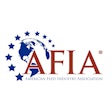As I penned this month's commentary, the United States was a few weeks away from its 2006 elections. Predictably, the television airwaves were saturated with political advertisements, the majority of which made negative statements regarding a candidate or proposition.
Political entities have the right to make this sort of ad, and I'm sure the ads are effective in achieving their short-term objectives. However, I am convinced that in the long term they only serve to disillusion the public and ultimately cause people to lose respect for all politicians, if not the political process in its entirety.
I mention this observation on negative political claims because at the August meeting of the Association of American Feed Control Officials Pet Food Committee, a question was raised regarding negative claims on petfood labels (e.g., "No ___"). While there was little time for discussion at that meeting, I gathered from the comments that some sort of additional regulatory control directed toward negative claims was being advocated.
I respectfully, but strongly, disagree with such a proposal. Negative claims should be subject to the same standard as any other claim, i.e., not false or misleading. True, some claims may be misleading by their very nature (e.g., "no cholesterol"). That claim, by itself, falsely implies a health benefit for dogs and cats similar to that for humans when scientific fact supports the opposite.
In most other cases, though, a truthful claim relating to the absence of an ingredient provides information to the consumer, who, for his or her own reasons, may be looking for that information as an integral component of the purchase decision process. The regulator may personally disagree with the criteria upon which this decision is made, but withholding information from the consumer on that basis alone shouldn't be within the regulator's purview. As long as the claim remains a true statement of fact and doesn't otherwise imply adverse effect of that ingredient, the consumer should be free to infer what he or she wants from that factual information. In other words, the consumer has the right to make a choice, right or wrong.
So, for the record, I strongly oppose any regulation specifically restricting negative claims. That said, I personally discourage anyone making negative claims from doing so.
A lesson from ethoxyquin
I am amazed that today many people (even those in the petfood industry) believe that ethoxyquin, a very effective antioxidant preservative, is highly toxic to pets. Having been in the US Food and Drug Administration (FDA) when the controversy was at its peak (early 1990s), I can say the scientific evidence showing ethoxyquin to be harmful when used as dictated by regulation is negligible. Rather, the "data" against its use was based largely on speculation and innuendo, initially on the part of several self-appointed consumer advocates.
At that time, several large petfood companies vowed to fight this false disparagement with scientific facts. They might have won, too, except the tide turned when some other companies joined in the negative campaign. As a result of petfood companies scrambling to remove ethoxyquin from formulas and/or disparaging competitors' products that continued to contain it, insinuation became fact, and the battle to continue use of this ingredient became futile. Ultimately, almost all companies succumbed, so nowadays, ethoxyquin has virtually vanished from the petfood ingredient list.
Although at one point FDA asked for a voluntary reduction of use levels in dog foods, the regulation permitting ethoxyquin in petfood at original levels of inclusion still stands today. Thus, it was competitive pressures, not any regulatory procedure, that caused this change in ethoxyquin use. Fortunately, reasonably suitable (albeit arguably not ideal) substitutes could be found to serve the function of ethoxyquin in petfood formulations. Still, in my opinion, loss of this useful tool by the industry is regrettable.
Did we learn anything?
Today, with the war against ethoxyquin having been won, there is a consumer campaign against another commonly used petfood ingredient. I won't say what it is, because I don't want to inadvertently give any publicity to this cause. I will say that it is a conditionally essential nutrient that has been included in the majority of petfoods for decades without any indication of adverse effect.
Regardless, in the past few months I've received quite a few calls about this ingredient. Some companies had first tried to disguise the name of the substance in the ingredient declaration, but that got them into trouble with regulators (and rightly so). It now appears that the only course of action remaining for these companies to consider is to remove that ingredient from all their formulations. I haven't talked to anyone who thought fighting the negative publicity with science was worth the effort.
It won't end there, either. I am aware of at least two other very commonly used ingredients where there is rising, although in my opinion, very misguided concern. One is an essential nutrient! What will these companies do if and when these ingredients come under public fire? If you expend enough effort, you're likely to find negative aspects of virtually any ingredient. What will be left?
What can companies do?
I have no easy answers. However, I do think the atmosphere of heightened public concern created in part by the profusion of negative claims has fostered this predicament. If the primary means of selling your product is to disparage other products or their ingredients, eventually it will come back to bite you, either directly or though the consumer's lack of confidence in the industry as a whole. Interestingly enough, most of the calls I received regarding the aforementioned current ingredient controversy were from companies that tend to follow a negative marketing strategy.
In my consulting practice, I focus on the regulatory ramifications of labeling. As a result, I rarely advise against use of a negative claim unless it is likely to be considered false or misleading by feed control officials. Personally, though, I would like to see fewer negative claims on petfood labels. I humbly suggest that, irrespective of the possibility of any new regulations restricting the use of negative claims, extolling the virtues of your product rather than denigrating others will serve your company (and the petfood industry) better in the long run.














